Unveiling South Africa’s Rugby Legacy: The Blue Bulls, Emirates Lions, and the Rich History of Rugby League
The Blue Bulls (known for sponsorship reasons as the Vodacom Blue Bulls) is a South African rugby union team that participates in the annual Currie Cup tournament and the United Rugby Championship. They are governed by the Blue Bulls Rugby Union and are based at Loftus Versfeld Stadium in Pretoria, Gauteng province.
The team as it is known today has its beginnings in 1938 when the then Northern Transvaal Rugby Union broke away from the Transvaal Rugby Football Union to gain status as an independent rugby union. The new team was named Northern Transvaal and donned light blue jerseys with a red Barberton Daisy emblem. However, in their very first match, they played in the red and gold hooped jerseys of the Pretoria Combined team that often “locked horns” with teams touring South Africa (red and gold being the colors of Pretoria).
The Vodacom Bulls, a distinguished rugby franchise, trace their roots back to 1938 when the Northern Transvaal Rugby Union (NTRU) decided to break away from the Transvaal Rugby Union, aiming to establish themselves as a formidable rugby force in South Africa. Adopting the Barberton Daisy as their emblem and light blue as their color of success, the NTRU clinched their first Currie Cup title in 1946, marking the beginning of a remarkable journey. Over the years, the Vodacom Blue Bulls, as they are now known, have claimed the Currie Cup 24 times.
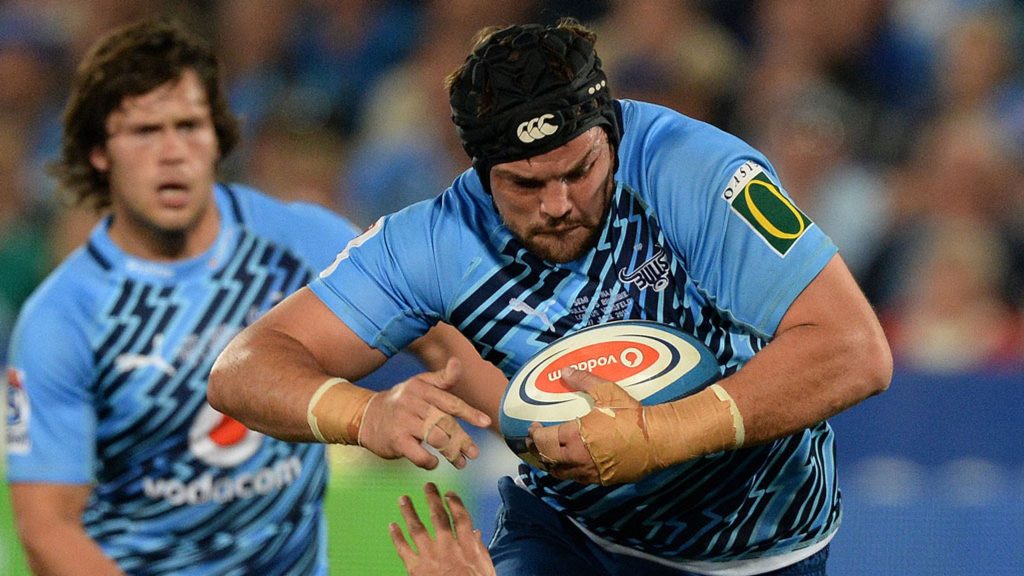
In 1998, the union underwent a name change, becoming the Blue Bulls in domestic competitions and the Bulls in Vodacom Super Rugby. The Vodacom Bulls have achieved unparalleled success in Vodacom Super Rugby, securing victory in three finals since the tournament’s inception in 1996.
Success and Achievements: Throughout its history, the Blue Bulls have enjoyed remarkable success on the rugby field, winning multiple domestic and international championships. They have been particularly dominant in the Currie Cup, South Africa’s premier domestic rugby competition, winning the title on numerous occasions and establishing themselves as one of the most successful teams in the tournament’s history.
In addition to their success in the Currie Cup, the Blue Bulls have also excelled in Super Rugby, the premier club rugby competition in the Southern Hemisphere. They have consistently been one of the top-performing South African teams in Super Rugby, reaching the playoffs and competing for the title on multiple occasions.
Notable Players and Contributions: Over the years, the Blue Bulls have been home to some of the greatest talents in South African rugby, with many players earning international acclaim and representing the Springboks with distinction. Legendary players such as Naas Botha, Frik du Preez, and Victor Matfield have all worn the Blue Bulls jersey and made significant contributions to the team’s success.
In addition to their on-field achievements, the Blue Bulls have also played a pivotal role in the development of rugby in South Africa, nurturing young talent through their youth structures and academies and promoting the growth of the sport at the grassroots level.
The list comprises a diverse array of players, each contributing their unique skills and strengths to the team:
Forwards:
- Akker van der Merwe – Hooker
- Cameron Hanekom – Openside flanker
- Cyle Brink – Flanker
- Deon Slabbert – Lock
- Dylan Smith – Prop
- Elrigh Louw – Number 8
- Francois Klopper – Prop
- Jacques Van Rooyen – Prop
- Jannes Kirsten – Flanker
- Johan Grobbelaar – Hooker
- Khutha Mchunu – Prop
- Marcell Coetzee – Flanker
- Marco van Staden – Blindside flanker
- Merwe Olivier – Lock
- Mornay Smith – Prop
- Nel Van Heerden – Lock
- Nizaam Carr – Number 8
- Reinhardt Ludwig – Lock
- Ruan Nortje – Lock
- Ruan Vermaak – Lock
- Simphiwe Matanzima – Prop
- WJ Steenkamp – Flanker
- Wilco Louw – Prop
Backs:
- Bernard Van Der Linde – Scrum Half
- Canan Moodie – Right Wing
- Celimpilo Gumede – Flanker
- Chris Smit – Inside Centre
- Chris Smith – Outside Half
- Cornal Hendricks – Right Wing
- Cornel Smit – Centre
- David Kriel – Full Back
- Devon Williams
- Embrose Papier – Scrum half
- Gerhard Steenekamp – Prop
- Harold Vorster – Centre
- Henry Immelman – Fullback
- Jaco van der Walt – Fly half
- Jan-Hendrik Wessels – Prop
- Janko Swanepoel – Lock
- Joe Van Zyl – Hooker
- Johan Goosen – Fly Half
- Kabelo Mokoena – Fullback
- Keagan Johannes – Scrum Half
- Kurt-Lee Arendse – Full Back
- Lionel Mapoe – Centre
- Marco Jansen van Vuren – Scrum Half
- Mihlali Mosi – Number 8
- Muller Uys – Number 8
- Phumzile Maqondwana – Flanker
- Robert Hunt – Prop
- Sebastian De Klerk – Fullback
- Sebastian Lombard – Fullback
- Sergeal Petersen – Wing
- Sibongile Novuka – Fullback
- Stedman Gans – Centre
- Stravino Jacobs – Right Wing
- Tiaan Lange – Fullback
- Tielman Nieuwoudt – Fullback
- Willie Le Roux – Fullback
- Zak Burger – Scrum Half
This roster showcases the depth and talent within the South African rugby pool, representing a formidable lineup of players across all positions.
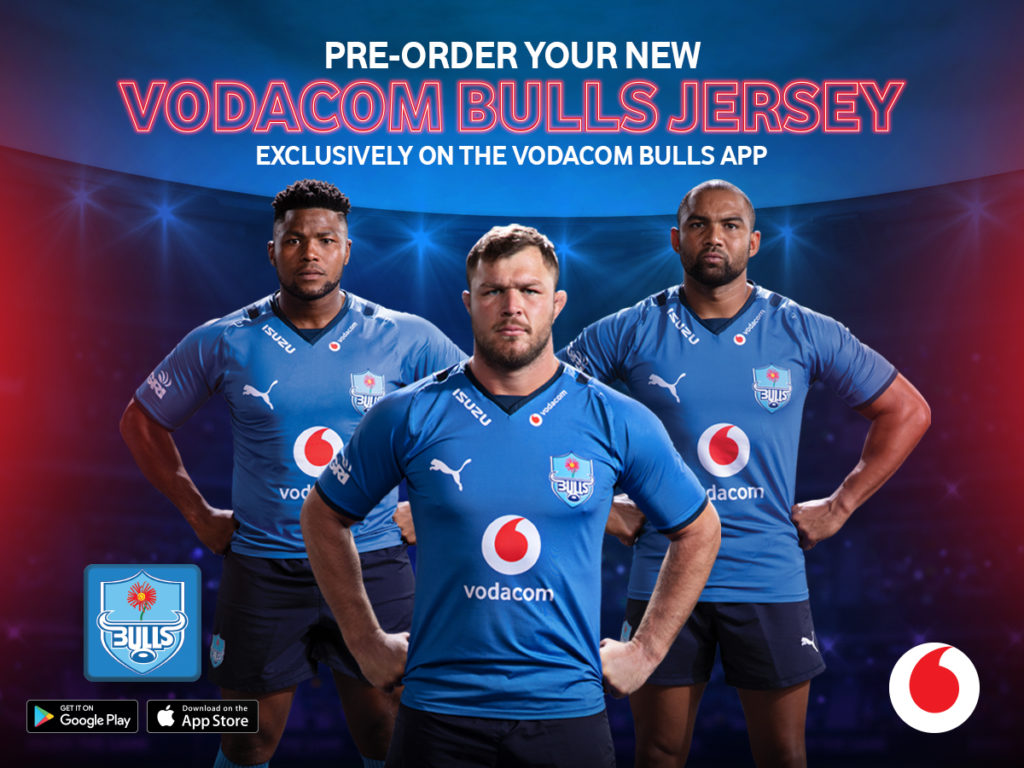
Fan Base and Culture:
The Blue Bulls boast a passionate and dedicated fan base known for their unwavering support and fervent loyalty to the team. Matches involving the Blue Bulls are often marked by electrifying atmospheres and packed stadiums, with fans donning the team’s iconic blue and white jerseys and cheering their heroes on to victory.
The team’s culture is characterized by a strong sense of tradition, pride, and resilience, reflecting the values of the Pretoria region and the broader Blue Bulls community. Whether competing at home or abroad, the Blue Bulls continue to uphold their proud legacy and remain a symbol of excellence in South African rugby.
The franchise added another title to their impressive resume in 2020 when they triumphed in the condensed Vodacom Super Rugby Unlocked competition. In the 2021/22 season, the Vodacom Bulls participated in the inaugural Vodacom United Rugby Championship, reaching the Grand Final where they faced the DHL Stormers in Cape Town. Their legacy as the most successful South African franchise continues, embodying a tradition of excellence in the world of rugby.
The Emirates Lions – A Professional Rugby Union Team Based in Johannesburg
The Lions, also known as the Emirates Lions for sponsorship reasons, is a professional rugby union team based in Johannesburg, Gauteng, South Africa. They participated in the Super Rugby competition until 2020 and have been competing in the United Rugby Championship since 2021. The team has undergone name changes, evolving from Transvaal (1996) to Gauteng Lions (1997) and finally the Cats (1998–2006).
Throughout their Super Rugby history, the Lions experienced a mix of results, finishing at the bottom of the table six times but reaching the semifinals on five occasions. Notably, they made consecutive final appearances in 2016 and 2017, facing the Hurricanes and the Crusaders, respectively. The team plays its home matches at Ellis Park Stadium.
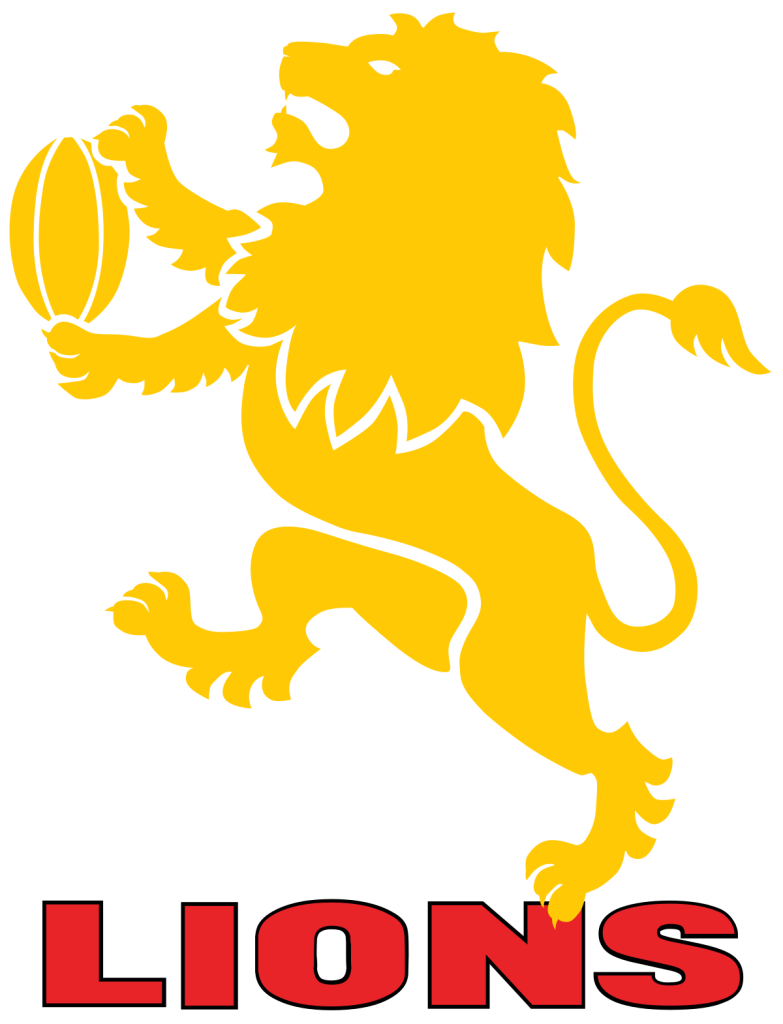
In 2006, the Lions faced possible relegation from the Super 14 due to a legal dispute involving the inclusion of the Southern Spears. However, a settlement was reached, and the Lions retained their place. In 2013, they were temporarily replaced by the Southern Kings but returned to Super Rugby in 2014 after winning a playoff against the Kings. The Lions have been a resilient and prominent presence in South African rugby, navigating challenges and showcasing their competitiveness on the field.
On 8 September 2006, the Golden Lions Rugby Union, the union that at the time operated both the Golden Lions and the Cats, announced that the team would be known in the future as the Lions, and unveiled a new logo.[3][4]
During the 2010 Super 14 season, the Lions lost all 13 games of the season, setting a new record. The previous record was held by the Bulls, with 0 wins from the 11-game season in 2002. On 20 January 2011, the club announced a 3-year sponsorship deal with telecoms company MTN. From 2011 to 2012 they were known as the MTN Lions for sponsorship reasons. Ivor Ichikowitz and Robert Gumede pledged to purchase a 49.9% stake in the club through their investment company GumaTac in October 2010. The deal fell apart in 2011 due to differences with GLRU executives. In February 2011, the club signed Springbok fly-half Butch James among other high-profile signings Lionel Mapoe, Pat Cilliers and Rory Kockott
Success and Achievements: The Lions have experienced periods of success throughout their history. They have won the Currie Cup, South Africa’s premier domestic rugby competition, several times, establishing themselves as one of the country’s top provincial teams.
In Super Rugby, the Lions have also enjoyed significant achievements, reaching the final of the competition on three occasions. They were runners-up in 2016 and 2017, losing to the Hurricanes and the Crusaders, respectively. Their dynamic style of play and attacking flair have earned them praise from rugby fans around the world.
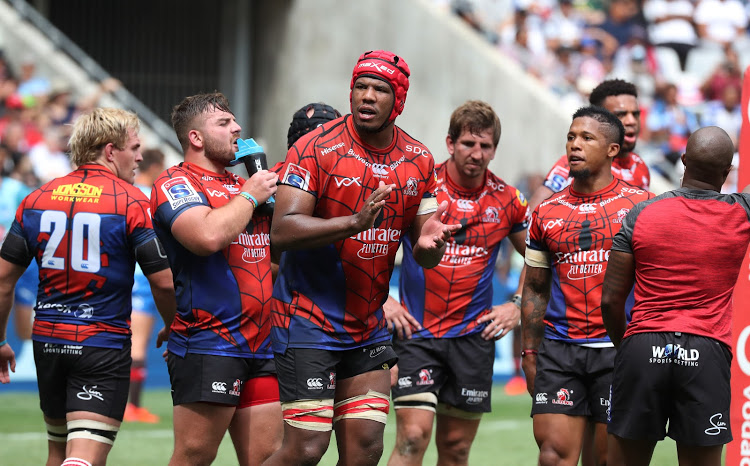
Home Ground: The Emirates Lions play their home matches at Emirates Airline Park, formerly known as Ellis Park Stadium. Situated in the heart of Johannesburg, Emirates Airline Park has a rich history and has hosted numerous iconic rugby matches, including the 1995 Rugby World Cup final, where South Africa famously defeated New Zealand to win their first Rugby World Cup.
The stadium has a seating capacity of over 62,000 spectators and provides a vibrant and passionate atmosphere for rugby matches involving the Lions.
Fan Base and Culture: The Emirates Lions boast a loyal and passionate fan base, known for their unwavering support and enthusiastic cheers during matches. Johannesburg and the surrounding areas have a strong rugby culture, and fans flock to Emirates Airline Park to watch their team in action.
The Lions’ supporters, often referred to as the Pride of Johannesburg, wear the team’s colors with pride and create a lively and vibrant atmosphere at home matches. Their passionate support motivates the players and adds to the spectacle of rugby in South Africa.
Overall, the Emirates Lions have established themselves as a formidable rugby franchise with a proud history and a bright future ahead. With a talented squad and dedicated fan base, they continue to strive for success in domestic and international competitions, representing Johannesburg and the Gauteng province with distinction on the rugby field.
Deep Dive into the History of South Africa Rugby League
Rugby league was introduced to South Africa in the 1950s through series tournaments featuring English and French teams, but initial interest waned. It wasn’t until the 1960s that South Africa engaged in international fixtures, facing British teams and touring Australia. Progress has been slow, and competing against established nations has been challenging. Despite difficulties, South Africa qualified for two World Cups in 1995 and 2000, facing tough opponents but failing to secure a victory. The team, known as The Rhinos since the early 1990s, wears predominantly green uniforms with black shorts, featuring the national flower, the King Protea, on their emblem. South African rugby league faces challenges due to the dominance of rugby union, limited school programs, and the popularity of the national rugby union and rugby sevens teams.

Rugby league first gained attention in South Africa when the English and French attempted expansion in the 1950s for the purpose of creating further international opposition. Three games were then played between the two nations on the continent but both sides viewed the matches as nothing more than friendly fixtures so never undertook the games in a serious manner and the public never subsequently took to the three exhibition games. Though rugby league was only seriously played in South Africa beginning in the 1950s, the sport was not unknown to South Africans prior to that decade; for example, a number of notable black and Coloured rugby union players, such as David Barends, Green Vigo, and Enslin Dlambulo, code-switched from union to league and moved overseas, in part because of the allure of professionalism, while also escaping the apartheid regime.
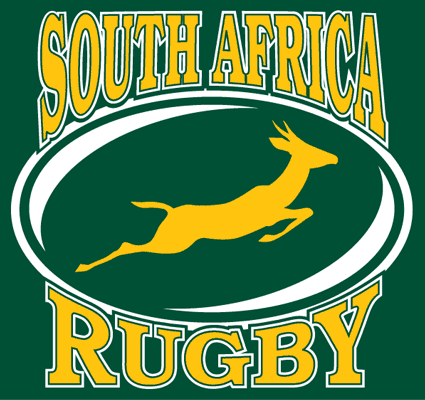
Over the next several years, rugby league lay dormant in South Africa and it was not until the 1960s when talks of creating a national side began. After much discussion within South Africa, it was eventually agreed for a national side to play a touring Great Britain and then undertake a tour of Australasia. The first South African national side played their first competitive fixture on 23 August 1962 and put on a good showing against the much stronger British but eventually lost by nineteen points 49–30. The following two fixtures turned out to be much the same with the South Africans being defeated on another two occasions but putting in good performances whilst never being comprehensively beaten. The South Africans embarked on their first tour eleven months later with a twenty-four-man squad that included several former Springboks. The tour started with several friendly fixtures against various minor representative sides where they gained two comfortable victories; the first international fixture of the tour took place in Brisbane against the world champion Australians and the South Africans performed with courage, but eventually lost the match 34–6. The following test was played a week later in Sydney that again saw the team put in a tough effort but lost again 54–21. South Africa left Australia without an international win and be low on confidence heading to New Zealand to play a sole fixture against the New Zealand national side whom were expected to win comfortably.

The history of rugby league in South Africa is a tale of resilience, revival, and ongoing development. While rugby union has long been the dominant form of rugby in the country, rugby league has its own unique story characterized by periods of growth, decline, and reemergence.
Early Beginnings:
Rugby league’s roots in South Africa can be traced back to the early 20th century when the sport first gained popularity in the country. The South African Rugby League (SARL) was established in 1953, marking the formal introduction of the sport at an organizational level. However, rugby league faced significant challenges in establishing itself amidst the entrenched dominance of rugby union, which enjoyed widespread support and institutional backing.
Initial Growth and Challenges:
Despite these obstacles, rugby league experienced periods of growth and enthusiasm, particularly in regions where rugby union was less prevalent. The sport attracted a passionate following among working-class communities, who were drawn to its fast-paced, dynamic style of play. During the 1960s and 1970s, rugby league enjoyed a modest but steady increase in popularity, with several clubs and competitions emerging across the country.
However, rugby league’s progress was hampered by various factors, including limited resources, organizational disputes, and the absence of sustained investment and infrastructure development. As a result, the sport struggled to compete with the established rugby union establishment, which enjoyed greater financial support, media coverage, and cultural prominence.
Decline and Resurgence:
By the late 20th century, rugby league in South Africa had entered a period of decline, with many clubs folding and participation levels dwindling. The sport faced numerous challenges, including internal conflicts, financial instability, and a lack of strategic vision and leadership. As a result, rugby league slipped into relative obscurity, overshadowed by the enduring popularity of rugby union.
However, the early 21st century witnessed a renewed interest in rugby league, fueled by grassroots initiatives, international exposure, and efforts to revitalize the sport at both the local and national levels. Organizations such as the South African Rugby League (SARL) and the Rugby League International Federation (RLIF) worked to promote the sport and expand its presence across the country.
In recent years, rugby league has experienced a modest resurgence in South Africa, with a growing number of clubs, competitions, and development programs emerging nationwide. The establishment of the South African Rugby League (SARL) and its affiliated bodies has provided a platform for the sport to thrive, while partnerships with international organizations and initiatives have helped raise its profile on the global stage.
Looking Ahead:
While rugby league in South Africa continues to face challenges, including competition from other sports and the legacy of rugby union’s dominance, the sport remains resilient and determined to carve out its own niche in the country’s sporting landscape. With ongoing efforts to promote participation, foster talent development, and strengthen organizational structures, rugby league is poised to build on its recent momentum and chart a promising future in South Africa.
Also Read on South Africa’s Waterfront Wonders in Cape Town: Cape Grace, Ellerman House, and One&Only
